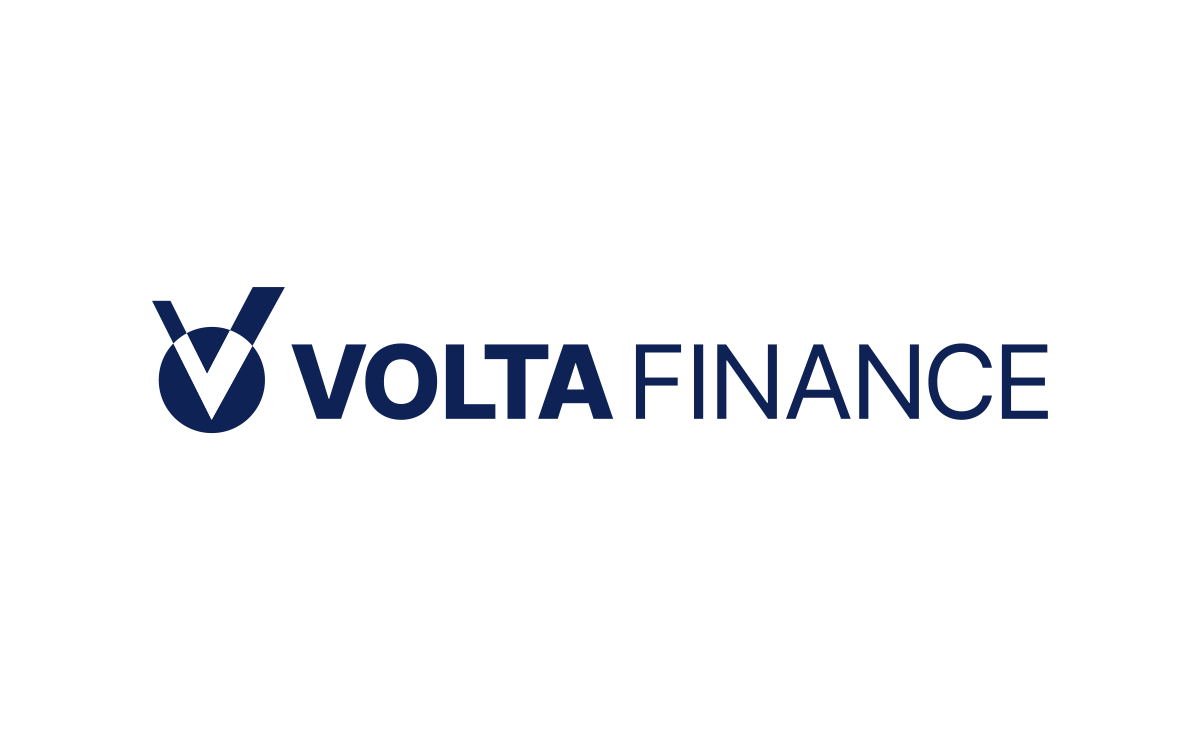Sequoia Investment Management Company Limited (LON: SEQI), the specialist investor in economic infrastructure debt, announces its results for the year ended 31 March 2019.
HIGHLIGHTS
· Annualised portfolio yield-to-maturity of 8.6% as at 31 March 2019
· Dividend of 6p per Ordinary Share paid during the year in line with target. Increased annual target dividend of 6.25p per Ordinary Share per annum announced in May 2019
· Over 2p per Ordinary Share NAV accretion achieved during the year after payment of dividends
· Raised gross proceeds of £75.7 million through an over-subscribed capital raise in May 2018
· Announced an additional capital raise in August 2018 which closed, significantly over-subscribed, in October 2018 with gross proceeds of £253 million
o Proceeds used to repay the outstanding balance of approximately £116 million of the £150 million multi-currency revolving credit facility (“RCF”)
o Remaining proceeds have since been fully deployed into the strong pipeline of attractive investment opportunities
· Diversified portfolio of 69 investments across 8 sectors, 26 sub-sectors and 13 mature jurisdictions
o 85% of investments in private debt
o 69% floating rate investments, capturing short-term rate rises
o Short weighted average life of 4.4 years creating re-investment opportunities
o Weighted average equity cushion of 35%
· Ongoing charges ratio of 1.02% (calculated in accordance with AIC guidance)
Post-year-end
· Successful oversubscribed capital raise in June 2019 raised gross proceeds of £216 million
· Revolving credit facility increased to £200 million from £150 million in August 2018
· In line with the Company’s commitment to implementing an ESG policy, the Investment Adviser signed up to the United Nations Principles of Responsible Investment (“UNPRI”)
| Financial Highlights to | 31 March 2019 | 31 March 2018 |
| Total net assets | £1,097,139,421 | £758,170,202 |
| Net Asset Value (“NAV”) per Ordinary Share * | 103.41p | 101.32p |
| Ordinary Share price * | 113.00p | 106.00p |
| Ordinary Share premium to NAV | 9.3% | 4.6% |
*Cum dividend
Robert Jennings, Chairman of Sequoia Investment Management Company Limited, said:
“The Board is pleased to report another strong set of results for the year, underpinned by the continued portfolio performance. In light of ongoing confidence in the Company’s portfolio and strong NAV growth to 103.41p, the Board has increased the target dividend to 6.25p per Share per annum. We are appreciative of the continuing support of Shareholders, demonstrated by our recent successful fund raises. As a result, we were able to use the funds raised to pay down debt and execute on the pipeline of opportunities.”
“Economic infrastructure debt remains an underinvested and attractive asset class, given its low correlation to the volatility of the wider equity markets and statistically higher recovery rates. The balance of floating rate and shorter term fixed investments means that the portfolio is also well positioned to benefit from a rising interest rate environment over time. The Board has confidence in the long-term direction of SEQI and in the Investment Adviser’s ability to grow the diversified portfolio and source high quality, stable, cash-generative economic infrastructure debt investment opportunities.”
Annual General Meeting
The Annual General Meeting of the Company will be held at Sarnia House, Le Truchot, St Peter Port, Guernsey on 5 August 2019 at 3:30 p.m. The Notice of AGM will be posted to shareholders in due course and copies are available on the Company’s website at https://www.seqifund.com/investors/documents-circulars/
COMPANY SUMMARY
Principal Activity
Sequoia Economic Infrastructure Income Fund Limited (the “Company”) invests in a diversified portfolio of senior and subordinated economic infrastructure debt investments through its subsidiary Sequoia IDF Asset Holdings S.A. (the “Subsidiary”, together the “Group” or the “Fund”). The Company controls the Subsidiary through a holding of 100% of its shares.
Investment Objective
The Company’s investment objective is to provide investors with regular, sustained, long‑term distributions and capital appreciation from a diversified portfolio of senior and subordinated economic infrastructure debt investments. This objective is subject to the Fund having a sufficient level of investment capital from time to time and the ability of the Fund to invest its cash in suitable investments.
Investment Policy
The Company’s principal investment policy is to invest in a portfolio of loans, notes and bonds where all or substantially all of the associated underlying revenues are from business activities in the following market sectors: transport, transportation equipment, utilities, power, renewable energy, accommodation and telecommunications infrastructure. The revenues should derive from certain eligible jurisdictions, as defined in the Company’s Prospectus. In addition, in excess of 50% of the portfolio should be floating rate or inflation-linked debt, and not more than 10% by value of the Fund’s investments (at the time of investment) should relate to any one individual infrastructure asset.
Dividend Policy
In the absence of any significant restricting factors, the Board expects to pay dividends totalling 6.25p per Ordinary Share per annum with effect from the quarter ended 30 June 2019 (increased from 6p per Ordinary Share) for the foreseeable future. The Company pays dividends on a quarterly basis.
CHAIRMAN’S STATEMENT
Dear Shareholder,
It is my pleasure to present to you the Annual Report and Audited Financial Statements of the Company for the financial year of operations ended 31 March 2019.
Consistent growth and performance
Since the Company’s initial public offering, in March 2015, the Company’s market capitalisation has grown from approximately £150 million to approximately £1.2 billion, with a net asset value of approximately £1.1 billion as at 31 March 2019. This growth has enabled the Company to build an increasingly diversified portfolio of investments, reducing the Company’s exposure to any one single asset from approximately 10% at the time of the IPO, to approximately 5% at 31 March 2019.
The Company’s Shares have consistently traded at a premium to its NAV, averaging 9.2% over the last year and also standing at 9.3% on 31 March 2019. The Board of Directors of the Company (the “Board”) believes that this is a reflection of the Company’s strong and consistent dividend policy and the uniqueness of its investment proposition to investors.
Investors in the IPO have received total dividends of 21.5p per Share and have seen the Share price increase from 100.0p to 113.0p as at 31 March 2019, representing a total gain of 34.5p per Share and an annualised return of 8.2% (6.7% calculated on a NAV basis, based on an IPO NAV of 98.0p per Share).
Net Asset Value performance
Over the year, the Company’s NAV per Share has increased from 101.32p to 103.41p. Over the same period, the Company has paid dividends of 6p per Share, resulting in a total return of 8.0%. This performance is predominantly the result of five factors: the portfolio consists of stable, cash generative assets which generate an annual return of over 8%; costs and expenses are moderate with an ongoing charges ratio of just over 1%; growing fee income resultant from originated investments; positive market movements on many of the Company’s investments; and a contribution of 0.78p from the issuance of Shares at a premium during the year.
The Board continues to be pleased with the progress made by Sequoia Investment Management Company, our Investment Adviser, in building a portfolio of attractive infrastructure debt investments. As at 31 March 2019, the invested portfolio comprised 69 investments, diversified by borrower, jurisdiction, sector and sub-sector, and generating an average yield-to-maturity of 8.6% from a portfolio of loans and bonds with an average equity cushion of 35%. The yield on the portfolio has the potential to increase if LIBOR increases, since 69% of the assets have floating-rate interest income.
I would now like to address certain risk factors which have the potential to affect Shareholders’ returns to a significant extent, and to comment on how we seek to address these.
Credit risk
As with any fund that invests in the debt markets, credit risk is arguably the single largest risk factor in our investment strategy. I am pleased to say that since the IPO, the Company has not had a single loan default, but we fully recognise that we cannot be complacent about credit risk.
Prior to making any new loan, our Investment Adviser undertakes thorough due diligence and credit analysis, culminating in a review of the proposed loan by their Investment Committee. Loans which are recommended by the Investment Committee and supporting reports are then forwarded to International Fund Management (“IFM”), our Investment Manager, who, if they consider it appropriate, will authorise the investment. However, in any case where the proposed investment falls outside pre-determined parameters as to size, credit quality and other considerations, IFM will invite the views of the full Board, supported by Tim Drayson and Kate Thurman, our independent consultants, before reaching a conclusion on whether the transaction should proceed.
The Board also feels strongly that thorough investment monitoring by the Investment Adviser and regular engagement of the Directors, independent consultants and our Investment Manager in this process further mitigates credit risk. To this end we hold portfolio review days semi-annually. These provide an invaluable forum for the Investment Adviser to present updates on each investment in the portfolio to our full team, and for considered discussion of market conditions, trends and other strategic considerations. In addition, at its quarterly meetings the Risk Committee reviews any individual investments and issues that merit its consideration.
Bearing in mind the long period of relatively benign credit conditions we have seen since the Company’s IPO, it has recently been agreed amongst our full team that, over the first half of the 2019/20 financial year, our Investment Adviser will seek to rebalance the portfolio marginally toward higher credit quality investments within our investment spectrum.
Liquidity risk
Liquidity is a further matter to which we pay close attention. We recognise that a large proportion of our investments, currently some 85%, are private debt investments. Private debt typically enjoys a higher yield (an “illiquidity premium”) compared to rated, listed bonds. This illiquidity premium is a significant source of alpha for the Company.
In addition, in order to mitigate the potentially adverse impact of cash drag, we typically draw on our RCF on a short-term basis, and in theory such drawings, all of which are repayable by 6 December 2021, could amount to £200 million.
To mitigate the potential risk of holding a high proportion of our portfolio in illiquid assets, and at times borrowing on our RCF for a finite period, we hold approximately 15 per cent of our portfolio in listed bonds, which are usually more liquid than private debt, should a need for cash arise. But we also have to plan for more extreme circumstances, and our main defence against illiquidity is our diversified and highly cash-generative portfolio. The cash generated by the portfolio arises from not just the investments’ regular, contractual and therefore predictable interest payments, but also as a result of the portfolio’s short duration, which means that many of the underlying loans in our portfolio mature over a short time frame.
Our Investment Adviser estimates that the portfolio will, over the next twelve months and twenty-four months respectively, generate over £109 million (c. 10% of NAV) and £158 million of free cash based on contractual repayments and excluding prepayments, after payment of its operating expenses and our target dividend to our Shareholders. This affords us considerable comfort that even if credit markets were to deteriorate and to turn illiquid for an extended period of time, we would have sufficient cash flow to meet our obligations to our advisers, our banks and our shareholders. Our status as a closed end fund further protects us against unexpected redemption pressure that from time to time afflicts other structures.
Our cash-generative portfolio also positions the Company well to reinvest principle at higher rates in a rising interest environment.
Environmental risk
The issue of climate change and carbonisation of the World’s atmosphere is one which has become a greater concern even over the relatively short period since our IPO. It naturally impacts our credit assessment processes but, more importantly, it also impacts the way we believe our capital should be deployed. Accordingly, at the end of 2018, we invited our Investment Adviser to implement a thorough ESG review of our policies and procedures for future investments, as well as a one-off review or our current portfolio. The process of this programme is described more fully in the Investment Adviser’s report.
In general, our investment portfolio has strong environmental credentials, with a meaningful allocation to renewable energy and related sectors such as electricity grid stabilisation and even highly-specialised ships needed for the maintenance of offshore windfarms. We have historically avoided assets such as the infrastructure for oil and gas exploration and production (oil rigs, for example). However, it would be fair to say that we have not to date had as comprehensive an ESG framework as we are now putting in place.
We are delighted that just after our year end, our Investment Adviser signed up to the United Nations Principles of Responsible Investments
Currency risk
Currently, only about 19% of the portfolio consists of UK assets denominated in Sterling, with the balance diversified across assets denominated in US Dollars, Australian Dollars, Euros, Norwegian Kroner, and Polish Złoty. In order to reduce the potential for NAV volatility arising from movements in the exchange rates, the Company has a large currency hedging position, which is designed to rise in value when Sterling strengthens and fall in value when Sterling weakens. The net effect is that the NAV behaves as though approximately 100% of the Company’s assets were denominated in Sterling.
Ongoing charges ratio
It is pleasing to report that our OCR in the year to 31 March 2019 was 1.02%. The single largest cost we face is the fee charged by our Investment Adviser. During the year we agreed a streamlined fee arrangement, which shareholders approved at our Annual General Meeting, and which provided for a significantly lower charge on funds under management of over £1 billion. The benefits of the new arrangement are now beginning to become apparent. At 31 May 2019, approximately £227 million of our assets under management were subject to investment advisory charges of 0.56%, so reducing the blended rate of the entire portfolio to 0.71%. If assets under management continue to increase, the blended rate payable to our Investment Adviser will fall further.
Events after the end of the reporting period
The Company announced on 14 May 2019 that it was proposing an additional capital raise to repay existing debt and acquire assets from the strong pipeline of potential investments for the Company, which will maintain the portfolio’s yield at 8% or higher, without taking an undue level of credit risk. In general, the market for infrastructure debt remains strong, especially in the US and in mezzanine lending opportunities in the UK and Europe, across a range of sectors including transportation, power and utilities. On 25 June 2019, the Company announced that the capital raise, which was significantly over-subscribed, had been successfully completed, raising gross proceeds of £216 million.
The Company also announced on 14 May 2019 that it has increased its Revolving Credit Facility to £200 million (from £150 million previously). This increase is in line with the growth of the Company since the RCF was originally executed. In addition to its increase, the tenor of the RCF was also increased by twelve months. These changes will allow the Company to reduce the risk of cash holdings reducing its performance. There remains no intention though to run any structural leverage on the Fund.
In April 2019, the Investment Adviser signed the United Nations Principles of Responsible Investment and is in the process of thoroughly incorporating these principles into its investment processes.
Finally, on 22 May 2019, the Company announced that it had increased the Company’s dividend target from 6 pence to 6.25p per Share per annum. It is expected that the first dividend to be declared under the new target will be in respect of the quarter ending 30 June 2019.
The Board
We have now worked together as a Board for four years. I have in previous years commented on how it has seemed to me that our Board and advisers have pulled together as a well balanced team, a circumstance which I am pleased to report is still as present today as it has ever been. I believe that this has and will continue to benefit Shareholder returns to a significant extent.
In 2018 we used the services of Duncan Read, an expert external Board effectiveness reviewer, to assess the performance of our Board and to advise us where we might beneficially make changes. Generally the feedback from that review was very positive, and it confirmed our suspicion that, with the growth of the Company’s asset base, it would be appropriate to appoint Sandra Platts as our Senior Independent Director.
This year we have undertaken an internal review of our effectiveness, led by Sandra, which has again shown the Board to be functioning effectively.
The Board supports the recommendations of the Davies Report and notes the recommendations of the Parker Review into ethnic diversity, and the Hampton-Alexander Review on gender balance in FTSE leadership. The Board supports the widening of its diversity whilst ensuring the capabilities, experience and background of each member remains appropriate to the Company and continues to contribute to overall Board effectiveness. During 2018, the Board appointed Kate Thurman and Tim Drayson as Independent Consultants. Kate and Tim have a specific mandate to the Board on the overall approach to risk management across the portfolio. The appointment of the Independent Consultants to the Board means further strengthening the Board’s governance framework, in both skills and diversity.
Having considered all aspects of the recent Board reviews, the Board is confident that it is functioning effectively and that it would not be in the interests of the Company’s shareholders to change the Boards composition at this point in time, after only four years of the Company’s existence.
The Board recently made a statement on Board Composition and Diversity, which can be found on the Company’s website https://www.seqifund.com/investors/documents-circulars.
Shareholder communications
The Company has recently revamped its website (www.seqifund.com), at which Shareholders can find news and information on the Company. We also post our monthly factsheets on our website. These are usually issued by the 10th working day of each month, and provide updates on the portfolio’s performance to the end of each preceding month. It is our intention to continue providing these regular and timely monthly updates. In addition, the Board, in conjunction with the Company’s key advisers, maintains regular dialogue with major Shareholders.
Positive outlook
Since the Company’s listing over four years ago, the portfolio has faced bouts of volatility in global capital markets resulting from circumstances including the Brexit vote, uncertainty in US politics, the rise of populist political movements in Europe, and heightened tensions in East Asia and the Middle East. Many of these risks continue to be present, but it is in such periods of volatility that the stability of infrastructure debt has historically demonstrated its real value to investors. For example, in the fourth quarter of 2018, the global corporate bond and loan markets declined, caused by a flight of capital to lower risk investments. During that quarter, the Bloomberg Barclays Global High Yield Total Return Index fell by approximately 3.5%. However, over the same period, the Company’s NAV total return was 1.5%, an outperformance of 5%. Moreover, the Investment Adviser was able to acquire a number of cheap investments in the secondary markets during that period of weakness.
Nevertheless, at some point in the future there is a high probability that market circumstances could deteriorate and we would not be immune from a severe general market sell off. The Board regularly assesses such risk and, were such circumstances to hit us in the near future, the Board believes that the Company is well placed and that its portfolio and investment pipeline should, over the long term, continue to deliver an attractive risk-adjusted return with a relatively low correlation to the broader financial markets.
I would like to close by thanking you for your commitment and support.
Robert Jennings
Chairman
4 July 2019






































